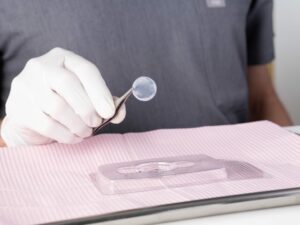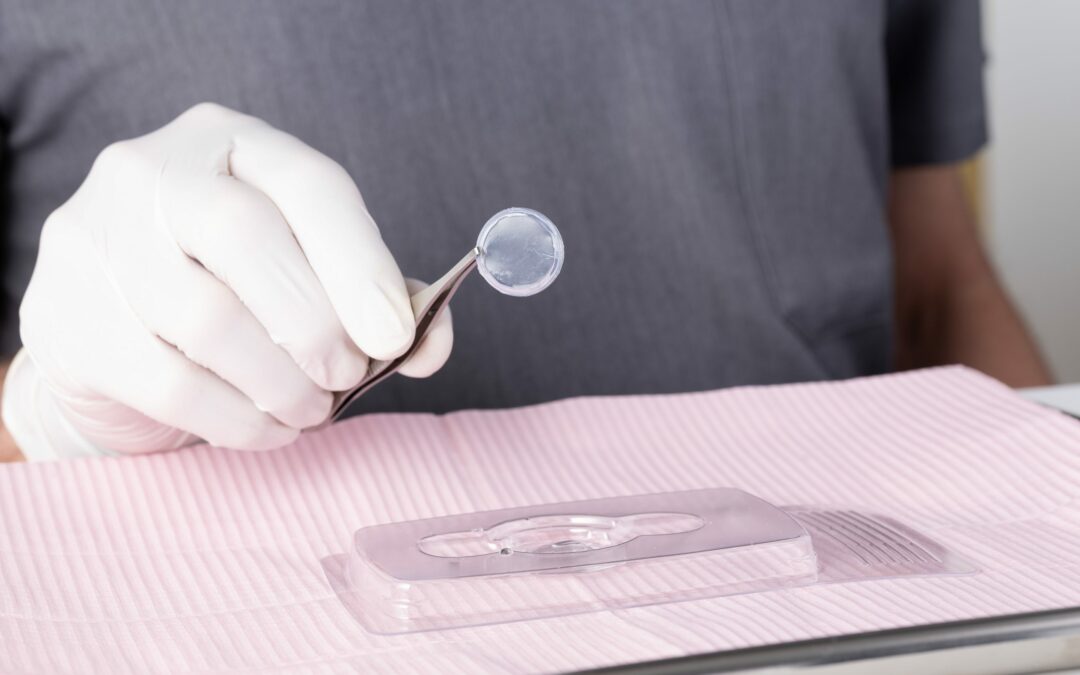According to Prokera Medical Contact Lenses: Function and Uses, Prokera is a corneal bandage device used to heal conditions which affect the surface of the eye (our cornea). It is made out of clear, flexible material and uses a piece of amniotic membrane to support the eye’s healing process. 
Prokera is said to instigate regenerative healing, helping to modulate ocular surface inflammation, promote ocular surface cell recovery, and even regenerate damaged or dysfunctional corneal nerves. It essentially protects the eye tissue, stimulates new cell growth, and helps with healing.
A Prokera contact lens is bigger than a regular contact lens. It remains in the eye for the duration of treatment and is not removed or put back in as you would at home like regular contact lenses.
According to Verywellhealth, some of the conditions that Prokera treats include:
- Keratitis
- Chemical burns
- Dry eye syndrome
- Recurrent corneal erosions
- Corneal ulcers (sores)
- Corneal abrasions and trauma
- Bullous keratopathy, blister-like swelling of the cornea
- Corneal infections
Where do we get the amniotic membrane?
From human placenta that consenting mothers donate after C-section delivery. The tissue is treated with antibiotics and prepared for patients. The amniotic membrane has chemical properties that can help heal the above eye conditions faster. Surprisingly the use of amniotic membranes in eyecare dates all the way back to the 1940’s; we have been seeing that the body can help heal itself in our eyes for over 80 years!
How does the treatment start?
We insert Prokera lenses in our office as other providers do; some also insert them in a hospital setting. Typically most patients will wear them for about three to five days, but your eye doctor may suggest having them removed a few days earlier or later.
Since Prokera may be contraindicated in certain patients (aka patients with glaucoma drainage devices or who have certain drug reactions), the best thing to do is to schedule an evaluation with a Prokera specialist.
What are the other treatments/options to Prokera and what are potential downsides?
According to a recent article published:
- Corticosteroids – used in so many conditions commonly, can actually lead to increased intraocular pressure (IOP), cataract formation and infection risk
- Eye drops – which seem like an easy option can lead to ocular surface changes, inflammation and fibrosis.
- Bandage contact lenses – downsides are that it could lead to infectious keratitis, dry eye, corneal hypoxia and corneal edema.
If you are interested in Prokera or know a loved one who may potentially need it, please call our office at 786-558-8542 today or write us at info@jenniferlohmd.com. Our specialists would be happy to evaluate whether Prokera is a good option!

